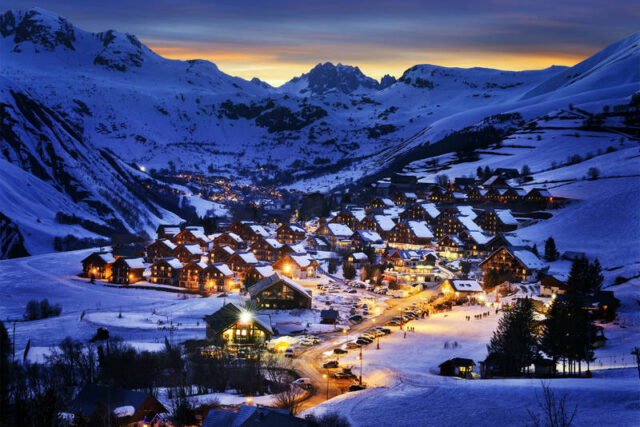In a world grappling with climate change, environmental degradation, and the rapid disappearance of natural wonders, a new trend has emerged in the travel industry: last chance tourism.
This trend motivates travellers to visit places at risk of disappearing, offering a unique—albeit fleeting—opportunity to witness fragile ecosystems and landmarks before they are gone forever.
But this kind of tourism has sparked debate about its environmental impact, with some arguing that it hastens the very decline it seeks to document.
The Rise Of Last-Chance Tourism
The appeal of last-chance tourism lies in its urgency. As social media shines a light on these threatened locales, many are inspired to visit while they still can.
According to a 2021 World Travel and Tourism Council report, travel is responsible for about 8 to 11 per cent of global greenhouse gas emissions. Tourists seeking to experience these places contribute to the environmental changes endangering them.
For many, though, the chance to see these places firsthand outweighs the concerns about their impact.
Last chance destinations vary widely, from glaciers in the Alps to coral reefs in Australia, and from the historic streets of Venice to the verdant Amazon rainforest. What unites them is the stark reality that these natural and cultural wonders may soon be gone, transforming them into bucket-list items for adventurous travellers.
The Environmental Paradox Of Last-Chance Tourism
While last-chance tourism provides an unforgettable experience, it raises difficult questions about sustainability. The more people flock to a fragile destination, the greater the strain on its ecosystem.
Take, for instance, the iconic Mer de Glace glacier in the French Alps, where surveys in 2022 found that 80 per cent of summer tourists said they wanted to protect the environment after visiting. However, each visitor still contributes to the very changes that threaten the glacier’s survival.
The paradox becomes even clearer in locations like the Great Barrier Reef.
As the Intergovernmental Panel on Climate Change (IPCC) projects that over 90 per cent of coral reefs could face bleaching by 2050, tourists flock to witness this vibrant ecosystem before it’s too late. Yet, the influx of visitors increases stress on the reefs, exacerbating the bleaching and accelerating their decline.
Also Read: Have You Ever Taken A ‘Volunteer Trip?’ Here’s What It Means
Economic Benefits vs. Environmental Costs
Last chance tourism is not without its defenders, who argue that it brings vital income to local communities. In 2019, the tourism sector fueled 333 million jobs worldwide, according to The Times, supporting about one-sixth of the global population.
For many, especially those in remote areas, last-chance tourism provides a lifeline, sustaining economies and providing jobs that would otherwise be unavailable.
However, this economic boost often comes at a high environmental cost. Without sustainable practices, the sheer volume of visitors can degrade sensitive areas beyond repair.
Tourism expert Rachel Dodds from Toronto points out, that long-term planning and management are essential to prevent irreversible damage to these delicate ecosystems.
Last Chance Destinations on the Verge of Extinction
Among popular last-chance destinations, a few stand out for their unique beauty and vulnerability.
In South America, the Amazon Rainforest—often called the “lungs of the Earth”—is threatened by illegal logging and deforestation. Travellers eager to experience its biodiversity might unknowingly contribute to its decline, as increased foot traffic disturbs local wildlife and ecosystems.
Similarly, Venice, Italy, faces the dual threats of rising sea levels and frequent flooding. This iconic city, famous for its canals and historic architecture, is increasingly at risk, prompting many to visit before it sinks further. Yet, the presence of large numbers of tourists exacerbates the issues, straining Venice’s infrastructure and adding to the environmental toll.
Last chance tourism is a poignant reminder of the fragility of our planet’s natural wonders and cultural treasures. While it provides a unique opportunity to see these places, it also highlights the urgent need for conservation and sustainable travel practices. The question remains: can we satisfy our wanderlust without accelerating the very decline we hope to witness?
By promoting awareness and supporting preservation efforts, Last Chance Tourism has the potential to transform into a movement that fosters positive change. As travellers, we must recognize our role in this cycle and make choices that help protect the destinations we cherish for future generations.
Image Credits: Google Images
Sources: FirstPost, Hindustan Times, Times of India
Find the blogger: Katyayani Joshi
This post is tagged under: sustainable travel, climate change, environmental conservation, disappearing destinations, responsible tourism, eco-friendly travel, global warming, nature preservation, bucket-list travel, endangered locations, travel responsibly, glacier melting, coral bleaching, wildlife conservation, adventure travel, eco-tourism, protect, planet
Disclaimer: We do not hold any right, copyright over any of the images used, these have been taken from Google. In case of credits or removal, the owner may kindly mail us.
Other Recommendations:
The World Of Dark Tourism: Dark Enough To Make Your Soul Search For More





































